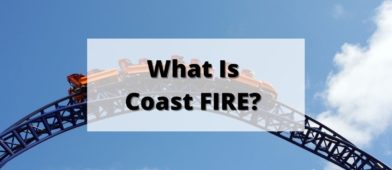If you’ve been spending much time on personal finance blogs and YouTube videos, you’re probably at least vaguely aware of something called the FIRE movement. FIRE, in this case, is a moniker for Financial Independence, Retire Early. There are different FIRE versions, but Fat FIRE is like early retirement on steroids. That is, it’s full-blown FIRE and not one of the watered-down variations.
Fat FIRE is the most challenging FIRE to achieve, so it’s essential to have a complete understanding of how Fat FIRE works and what you’ll need to do to achieve it.
Table of Contents
What Is Fat FIRE?
Fat FIRE is FIRE on steroids, and probably the one most people think of in connection with the topic. It’s the version where not only do you reach financial independence and retire early, but you do it in style. In the most classic plan, you’ll reach a level of wealth that will enable you to live a high-end lifestyle. Or at least substantially higher than how the average person lives.
Some sources on this unofficial financial path suggest requiring a minimum investment income of $100,000 per year. If that’s the case, then you’ll need an investment portfolio with a minimum of $2.5 million to achieve that goal.
Fat FIRE isn’t the only variation of FIRE – Barista FIRE and Lean FIRE are two others.
Barista FIRE
Barista FIRE is kind of like early retirement light. It’s a hybrid version of FIRE, in which you rely partially or primarily on investment income but supplement it with an earned income source.
The word “barista” refers to people in part-time jobs at Starbucks, though the actual earned income source has unlimited potential. It’s primarily for those who want greater financial independence but don’t mind continuing to work, at least part-time.
Lean FIRE
If Barista FIRE is the hybrid version of FIRE, Lean FIRE is the cheapskate version. It involves lowering your cost of living to the bare minimum – a standard of living that’s below that of the average person.
The theory is that if you can lower your expenses sufficiently, you won’t need much income to survive. But you’ll employ the same investment accumulation strategy to generate retirement income, just not at the level required for Fat FIRE.
Why $2.5 Million?
$2.5 million is used as a Fat FIRE benchmark because it’s the amount required to generate at least $100,000 per year in sustainable investment income.
Why sustainable? If you’re going to retire early, say by age 50, your portfolio will need to generate sufficient income for at least the next 40 years. If early retirement comes at 40, the portfolio will need to cover at least 50 years.
How can we be sure $2.5 million will provide a relatively stable income of $100,000 for the rest of your life?
The Safe Withdrawal Rate (SWR)
The safe withdrawal rate is the most basic metric in FIRE. Loosely, it holds that if you withdraw no more than 4% of your portfolio each year, the portfolio will continue to provide that income level for 30 years or even longer.
The SWR, popularized by financial advisor William Bengen in the 1990s, suggests that an annual withdrawal rate of between 3% and 4% would provide near certainty that a portfolio invested in both stocks and bonds wouldn’t deplete for at least 30 years. More recent studies have confirmed the findings in the report.
Making the strategy work will require a substantial investment in stocks. The most successful models require an allocation of between 50% and 100% in stocks, with the remainder in bonds.
But there is an important caveat here, which has to do with the dating of the report. Since it relies on data from 1995, it incorporates bond interest rates above 5% per year. Since that level of return is impossible in 2022, you’ll need to place a heavier emphasis on stocks. That will require investing aggressively, with a small bond allocation primarily for safety rather than income.
To calculate, we’ll use 4% of the total portfolio, or 25 times the income level needed.
For example, $2.5 million generates a $100,000 income at 4%. Alternatively, 25 times the desired income of $100,000 is also $2.5 million. Either calculation brings you to the same result.
A critical aspect of the safe withdrawal rate is that it accounts for inflation. A blended stock/bond investment mix is likely to yield a return greater than 4%. If you hold excess earnings in the portfolio, it will offset inflation in the future.
The Benefits of Fat FIRE
The benefits of Fat FIRE are almost so obvious they don’t need to be mentioned – but I’ll do it anyway.
- You’ll reach a point where money will no longer be a problem. That’s because you’ll have an above average income virtually for the rest of your life.
- You’ll no longer need to work. For many, this is the main attraction of FIRE of any variation. But Fat FIRE holds the possibility of saying goodbye to work forever – unless you choose to do otherwise.
- You may have a higher standard of living than you do now. Part of that is because you’ll be living on far less than you earn so you can accumulate the funds you need to reach Fat FIRE. The other part is that you’ll be free to live on the entire 4% income your portfolio generates.
- You’ll have complete mobility. Since you’ll no longer be tethered to a stationary job, you can live anywhere in the world you want.
- Complete control of your time. Since you’ll no longer need to work, you can choose exactly what you want to do with your time. That may be spending more time with family and friends, traveling the world, taking on exciting new adventures, doing volunteer work, or – if you choose – to take on a new career, perhaps one that doesn’t necessarily pay a lot of money, but one that you’ll enjoy.
These are just some of the more obvious advantages. Based on your personality and plans, there may be more.
The Disadvantages of Fat FIRE
There are disadvantages to all the apparent advantages of Fat FIRE, and they’re not minor.
First and foremost is the amount of money you need to accumulate in your investment portfolio. That’s because Fat FIRE isn’t just about achieving enough wealth to break free of employment but accumulating enough to live well.
If it’s difficult to achieve other levels of FIRE, like Barista, Lean and regular FIRE, the task will be much greater because you’ll likely need to accumulate millions of dollars to reach Fat FIRE status.
It’s not just the amount of money either, but the time it will take. While you might achieve lesser forms of FIRE in 10 or 15 years, Fat FIRE can easily take 20 years or longer. Statistically, only about 15% of American millionaires reach that status before age 50, and most are over 60.
The Two Most Important Strategies to Achieve Fat Fire
That doesn’t mean reaching millionaire status before 50 is impossible, but it is to make the point that it certainly won’t be easy. The road to Fat FIRE will be much more difficult if it requires becoming a multimillionaire.
It will require two crucial disciplines, neither of which may be in your personality makeup:
- You’ll need to be fully capable of living well beneath your means. Reaching the portfolio level necessary for Fat FIRE will require saving and investing 30%, 40%, or even 50% or more of your pay. That will mean living without a lot of the perks that people with similar incomes enjoy.
- You’ll need to invest very aggressively. The standard 60/40 stock/bond split is unlikely to get the job done. Having 80% to 100% in stocks is practically a requirement. You’ll then need to be prepared to ride out the kinds of bear markets that can decimate a portfolio that’s so heavily invested in stocks.
Not many people can live comfortably with these two strategies, let alone maintain the intensity for 20 or more years. That’s a significant reason why so many choose a more easily attainable type of FIRE.
Who Is the Ideal Candidate for Fat FIRE?
We just discussed the two most important strategies to achieve Fat FIRE. To reach your goal, you’ll need to have discipline and commitment to keep the ball moving forward for the years and decades it will take to hit pay dirt.
There are a few other factors involved that many FIRE advocates don’t always correctly acknowledge.
For example, achieving Fat FIRE will be much easier for high-income earners. While it may be possible to achieve the status with an income of less than $100,000 per year, it will be easier with a higher income.
Fat FIRE will be much easier to reach if you don’t have children. Children represent an additional expense that will undoubtedly reduce your chances of success. But they may also make it more challenging to invest the time needed to increase your income.
Finally, it will be mission-critical to have a generally frugal approach to life. If you have an appetite for expensive cars, a lovely home, and exotic vacations, you may never reach your goal.
Because of the magnitude of the goal involved with Fat FIRE, achieving it will require a unique personality profile.
The Bottom Line of Fat FIRE
If I seem as though I’m being cautious about Fat FIRE, it’s because this version of financial independence isn’t for everyone. But if you think it’s for you, go for it because the payoff certainly justifies the effort.
And even if you don’t reach Fat FIRE, your progress toward the goal will undoubtedly improve your financial situation dramatically. And along the way, you may decide to opt for a lesser version of FIRE that may be just as satisfying as Fat FIRE but easier to reach.



